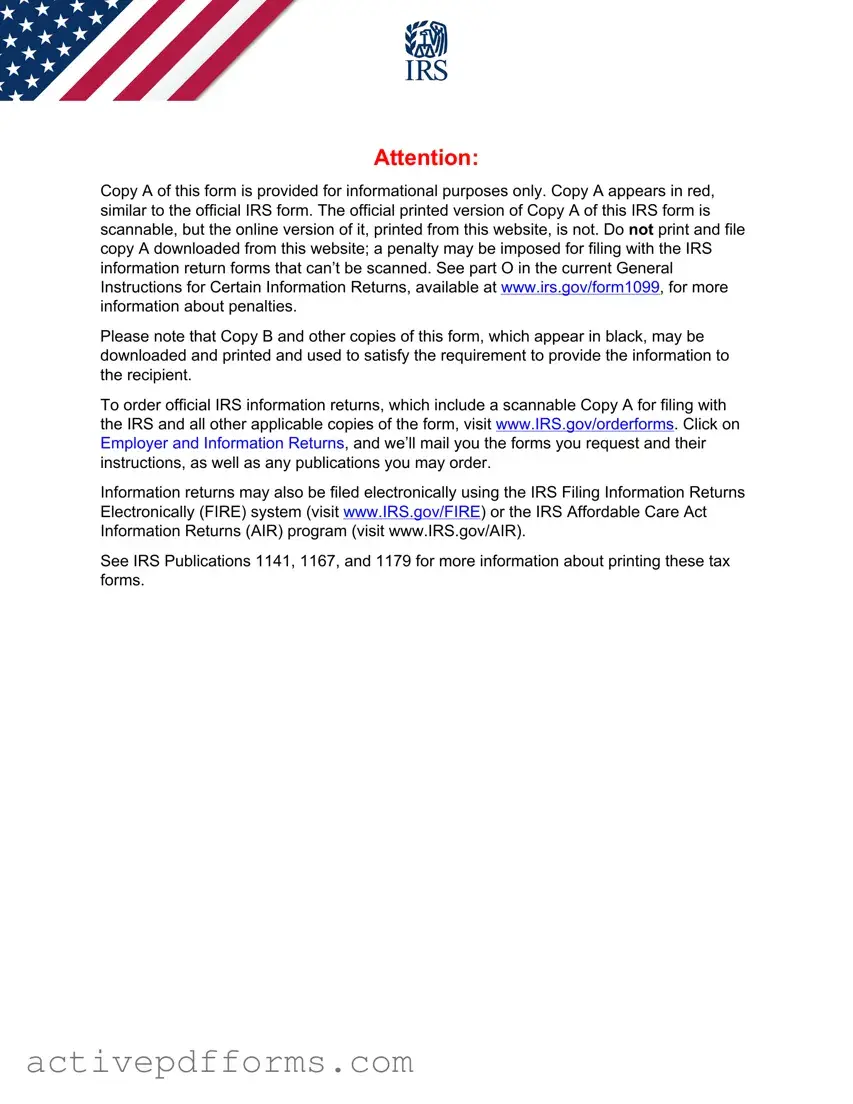Instructions for Recipient (continued)
F—Charitable gift annuity.
G—Direct rollover of a distribution to a qualified plan, a section 403(b) plan, a governmental section 457(b) plan, or an IRA.
H—Direct rollover of a designated Roth account distribution to a Roth IRA.
J—Early distribution from a Roth IRA, no known exception (in most cases, under age 59½).
K—Distribution of traditional IRA assets not having a readily available FMV.
L—Loans treated as distributions. M—Qualified plan loan offset.
N—Recharacterized IRA contribution made for 2022 and recharacterized in 2022.
P—Excess contributions plus earnings/excess deferrals (and/or earnings) taxable in 2021.
Q—Qualified distribution from a Roth IRA.
R—Recharacterized IRA contribution made for 2021 and recharacterized in 2022.
S—Early distribution from a SIMPLE IRA in first 2 years, no known exception (under age 59½).
T—Roth IRA distribution, exception applies.
U—Dividend distribution from ESOP under section 404(k). Note: This distribution isn’t eligible for rollover.
W—Charges or payments for purchasing qualified long-term care insurance contracts under combined arrangements.
If the IRA/SEP/SIMPLE box is checked, you’ve received a traditional IRA, SEP, or SIMPLE distribution.
Box 8. If you received an annuity contract as part of a distribution, the value of the contract is shown. It isn’t taxable when you receive it and shouldn’t be included in boxes 1 and 2a. When you receive periodic payments from the annuity contract, they’re taxable at that time. If the distribution is made to more than one person, the percentage of the annuity contract distributed to you is also shown. You’ll need this information if you use the 10-year tax option (Form 4972). If charges
were made for qualified long-term care insurance contracts under combined arrangements, the amount of the reduction in the investment (but not below zero) in the annuity or life insurance contract is reported here.
Box 9a. If a total distribution was made to more than one person, the percentage you received is shown.
Box 9b. For a life annuity from a qualified plan or from a section 403(b) plan (with after-tax contributions), an amount may be shown for the employee’s total investment in the contract. It is used to compute the taxable part of the distribution. See Pub. 575.
Box 10. If an amount is reported in this box, see the Instructions for Form 5329 and Pub. 575.
Box 11. The first year you made a contribution to the designated Roth account reported on this form is shown in this box.
Box 12. If checked, the payer is reporting on this Form 1099 to satisfy its Internal Revenue Code chapter 4 account reporting requirement under FATCA. You may also have a filing requirement. See the Instructions for Form 8938.
Box 13. Shows the date of payment for reportable death benefits under section 6050Y.
Boxes 14–19. If state or local income tax was withheld from the distribution, boxes 16 and 19 may show the part of the distribution subject to state and/or local tax.
Additional information. You may want to see:
Form W-4P, Form 4972, Form 5329, Form 8606
Pub. 525, Taxable and Nontaxable Income Pub. 560, Retirement Plans for Small Business Pub. 571, Tax-Sheltered Annuity Plans
Pub. 575, Pension and Annuity Income Pub. 590-A, Contributions to IRAs Pub. 590-B, Distributions from IRAs
Pub. 721, U.S. Civil Service Retirement Benefits Pub. 939, General Rule for Pensions and Annuities Pub. 969, HSAs and Other Tax-Favored Health Plans






 CORRECTED (if checked)
CORRECTED (if checked)

 CORRECTED (if checked)
CORRECTED (if checked)

 CORRECTED (if checked)
CORRECTED (if checked)
